Basil, with its delightful aroma and versatile uses in the kitchen, is an herb that every gardening enthusiast should consider growing.
Whether you’re a seasoned gardener or just starting out, cultivating basil is relatively easy and immensely rewarding.
In this guide, we’ll delve into the benefits of growing basil and explore some of my favorite basil varieties.
Benefits of Growing Basil
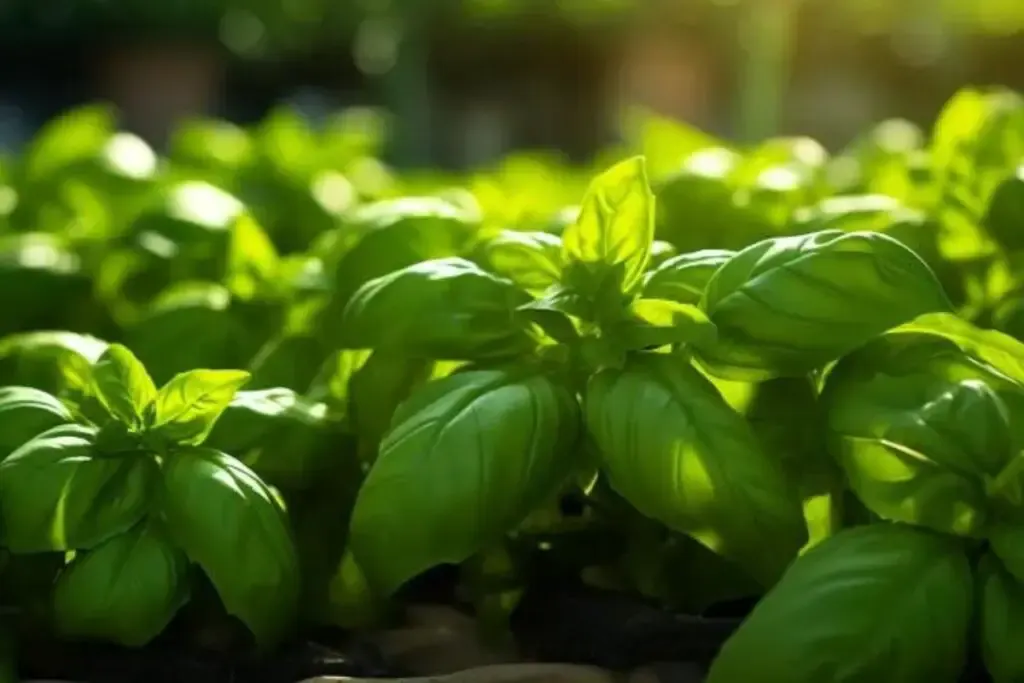
1. Culinary Versatility
One of the primary reasons people grow basil is for its culinary applications. Whether you’re making a classic Italian pesto, adding fresh basil leaves to salads, or garnishing your favorite pizza, basil elevates the taste of numerous dishes.
Its aromatic leaves impart a unique flavor that is both refreshing and savory, making it an essential herb for any kitchen.
2. Medicinal Properties
Basil is more than just a flavor enhancer; it also boasts a range of medicinal properties. It contains essential oils with antibacterial and anti-inflammatory characteristics.
Basil leaves are rich in antioxidants and are believed to promote overall health and well-being. Some people even use basil as a natural remedy for minor ailments, such as soothing headaches or aiding digestion.
3. Garden Friendliness
Basil is an excellent companion plant in your garden. Its fragrance can help repel pests like mosquitoes and flies, making it a valuable addition to your outdoor space.
Additionally, basil attracts pollinators like bees, which can benefit nearby vegetables and fruits by promoting cross-pollination.
My Favorite Basil Varieties
Now that we’ve explored the benefits of growing basil let’s take a closer look at some of my favorite basil varieties. Basil comes in various flavors and colors, making it a delightful addition to any garden.
Here are three of my top picks:
1. Sweet Basil
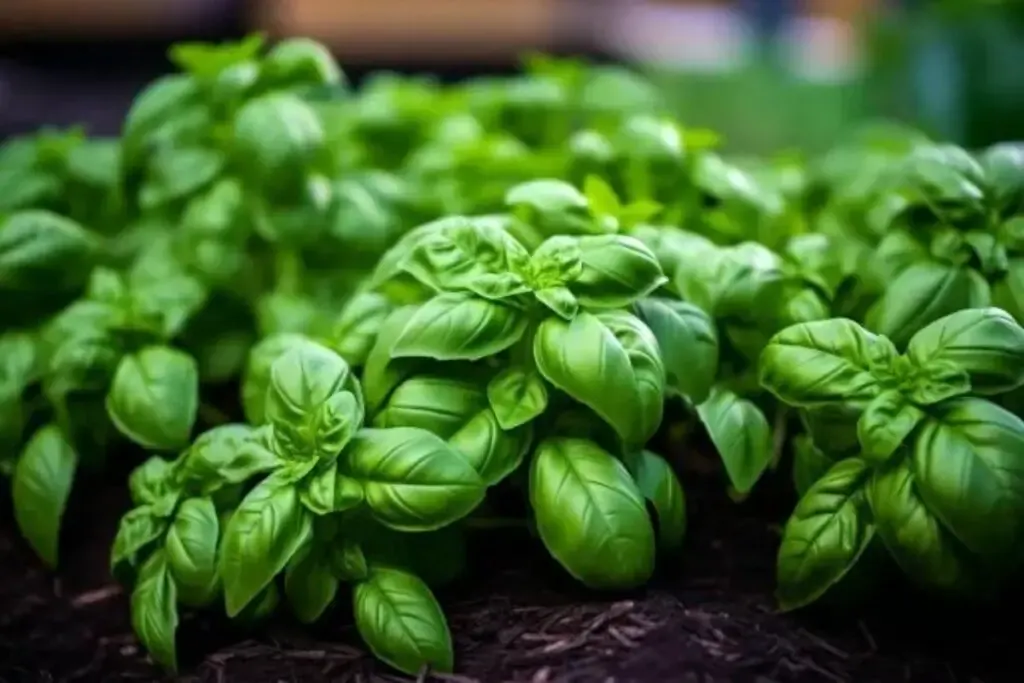
Sweet Basil is the quintessential basil variety and is often referred to as Genovese Basil. It’s known for its vibrant green leaves and a classic, sweet aroma that is perfect for traditional Italian dishes like pasta and Caprese salad. This variety is relatively easy to grow, making it an excellent choice for beginners.
2. Thai Basil
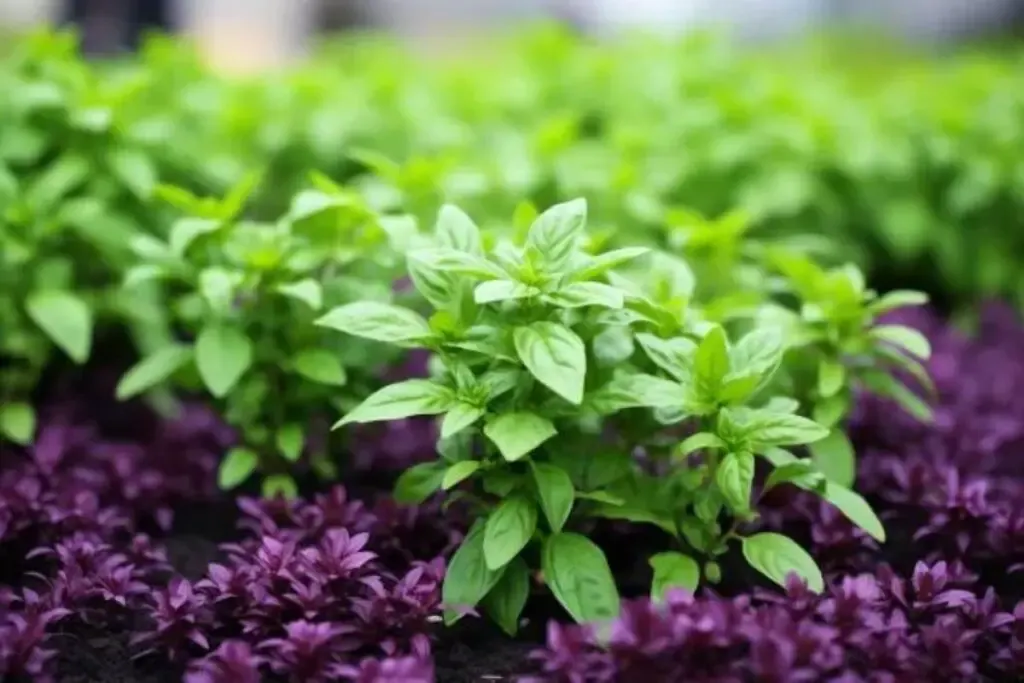
Thai Basil, also known as Holy Basil or Asian Basil, adds an exciting twist to your herb garden. It boasts an anise-like flavor with a hint of spice, making it ideal for Thai and other Asian cuisines. Its purple stems and unique flavor make it a standout choice among basil varieties.
3. Lemon Basil
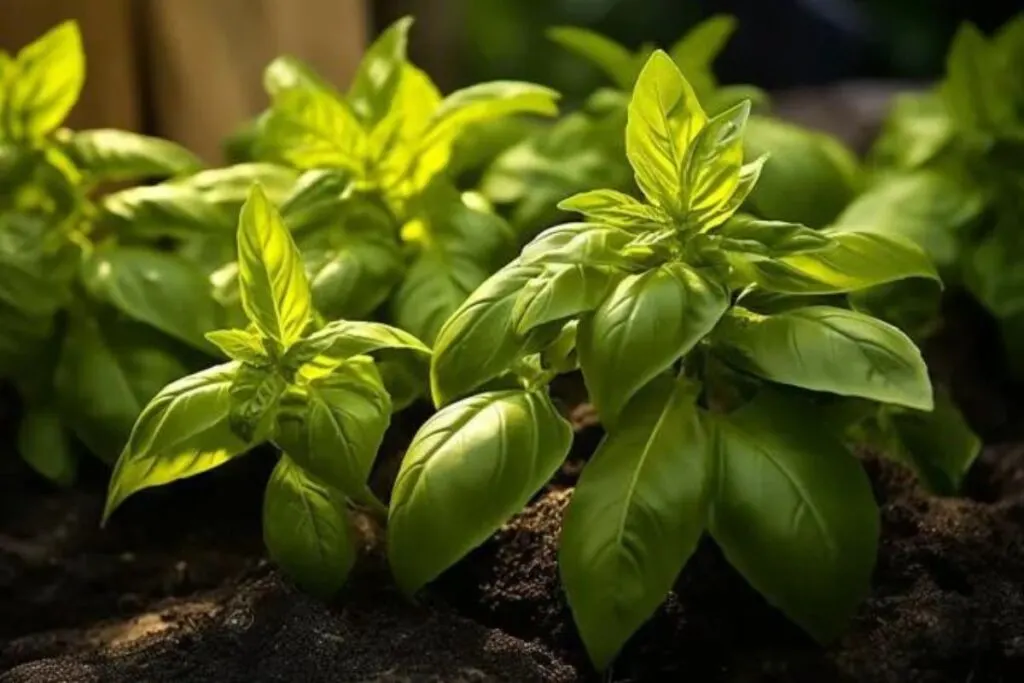
Lemon Basil is a delightful herb that infuses a hint of citrusy goodness into your dishes. With its lemony fragrance and subtle lemon flavor, it pairs exceptionally well with seafood, chicken, and even desserts. This variety is known for its refreshing aroma and bright green leaves.
Basil Care
Now that we’ve explored the benefits of growing basil and learned about some of my favorite basil varieties, it’s time to dive into the essential aspects of basil care.
With the right attention and care, you can ensure your basil thrives and provides you with an abundance of aromatic leaves.
Planting
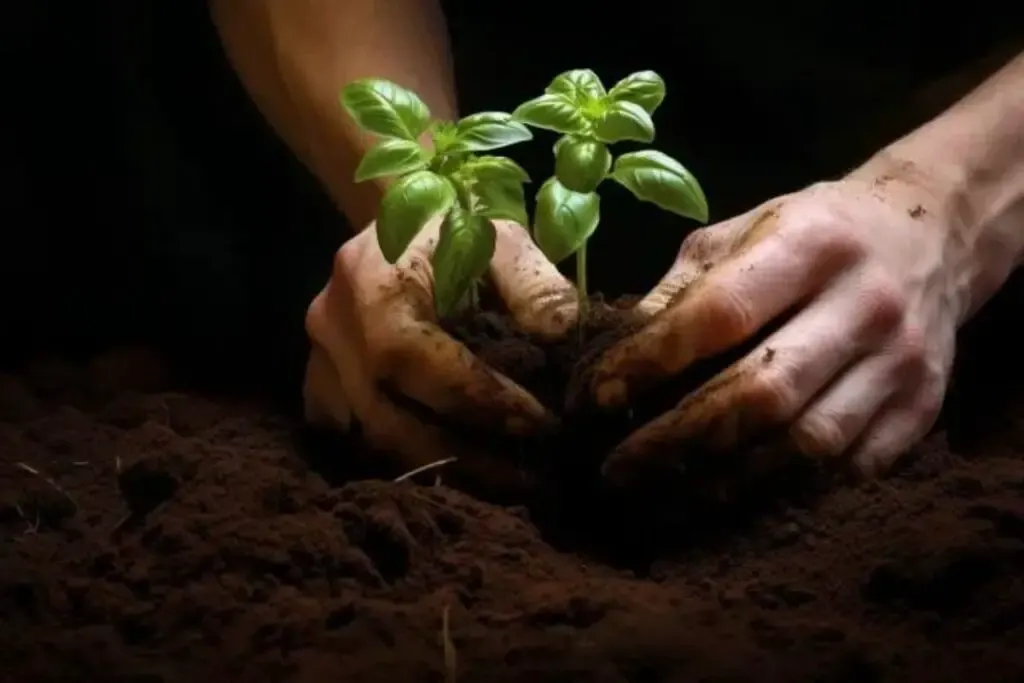
Planting basil is a straightforward process. Start by selecting a sunny spot in your garden or a suitable container for growing indoors.
Basil enjoys warmth, so ensure the temperature remains above 50°F (10°C). Plant basil seeds or seedlings in well-draining soil and space them about 8 to 12 inches apart. If you’re growing basil indoors, use a good-quality potting mix.
Light
Basil is a sun-loving herb and thrives in full sunlight. It requires at least 6 to 8 hours of direct sunlight daily.
If you’re growing basil indoors, place it near a south-facing window or provide artificial grow lights to mimic sunlight. Adequate light is crucial for the plant’s growth and flavor development.
Soil
Basil prefers well-draining soil with a slightly acidic to neutral pH level (around 6.0 to 7.0). Ensure the soil is rich in organic matter and has good aeration.
Adding compost to the soil before planting can help improve its texture and nutrient content, providing a favorable environment for your basil plants.
Water
When it comes to watering basil, it’s essential to strike the right balance. Basil likes consistent moisture but doesn’t appreciate waterlogged conditions.
Water your basil plants when the top inch of soil feels dry to the touch. Ensure proper drainage to prevent root rot. When watering, aim at the base of the plant and avoid wetting the leaves, as this can lead to fungal issues.
Temperature and Humidity
Basil thrives in warm temperatures, ideally between 70°F to 90°F (21°C to 32°C). It’s sensitive to cold temperatures and frost, so be cautious when planting in early spring.
Basil also prefers moderate humidity levels. If you’re growing basil indoors, consider using a humidity tray or misting the plant occasionally to maintain suitable humidity levels.
Fertilizer
To keep your basil plants healthy and productive, provide them with a balanced, water-soluble fertilizer every 3-4 weeks during the growing season.
Avoid over-fertilizing, as it can lead to excessive foliage growth at the expense of flavor. Use a fertilizer with a balanced N-P-K ratio, such as 10-10-10 or 14-14-14, to ensure your basil gets the nutrients it needs.
Harvesting Basil
Harvesting basil is a rewarding process that allows you to enjoy the fresh, aromatic leaves in your culinary creations. Choose the right time, preferably in the morning, when the leaves are most flavorful, and avoid the hot afternoon sun.
Use clean scissors or your fingers to snip or pinch off individual basil leaves or stems, starting with the outer leaves and working your way in. Be mindful not to remove more than one-third of the plant at once to ensure continued growth.
Regularly pinch off any flower buds to prevent the plant from flowering and to maintain the robust flavor of the leaves. Proper harvesting ensures a steady supply of fresh basil throughout the growing season.
Pruning
Pruning is an essential part of basil care that helps maintain the plant’s vigor and flavor. Here are three key pruning tips to keep your basil thriving:
- Regular Pinching: To encourage bushy growth, regularly pinch off the top set of leaves and the stem just above a leaf node. This will prevent your basil from becoming tall and leggy while promoting the development of lateral branches.
- Remove Flower Buds: When basil begins to flower, its flavor can decline. To prevent this, promptly pinch off any flower buds as soon as you notice them. This will divert the plant’s energy back into leaf production and keep the flavor robust.
- Harvest Strategically: Harvest basil leaves regularly to promote new growth and maintain the plant’s shape. Use clean scissors or your fingers to snip or pinch off individual leaves or whole stems as needed. Avoid taking more than one-third of the plant at once to ensure it continues to thrive.
Propagating
If you want to expand your basil garden or share your love for this herb with friends and family, propagating basil is a cost-effective and straightforward method. Basil can be propagated through stem cuttings. Here’s how:
- Choose Healthy Cuttings: Select a healthy basil plant and snip a 4- to 6-inch cutting just below a leaf node. Ensure the cutting has several leaves and remove any lower leaves that might come into contact with the soil.
- Rooting Medium: Place the cuttings in a container filled with a well-draining rooting medium, such as perlite or a mix of potting soil and sand. Water the medium lightly to settle it around the cuttings.
- Maintain Moisture: Cover the container with a plastic bag or plastic wrap to create a mini-greenhouse effect. This helps retain humidity and encourages root development. Keep the cuttings in a warm, bright location but out of direct sunlight.
- Transplant: After a few weeks, when the cuttings have developed roots, transplant them into individual pots or your garden. Be gentle to avoid damaging the delicate roots.
How to Grow Basil From Seed
Growing basil from seed is a rewarding and cost-effective way to expand your basil garden. Here’s a simple guide to get you started:
- Seed Selection: Choose high-quality basil seeds from a reputable source. There are various basil varieties available, so select the one that suits your taste preferences.
- Indoor or Outdoor Sowing: Basil can be grown indoors in pots or outdoors in your garden. If starting indoors, sow seeds in small pots or seed trays filled with potting soil. For outdoor sowing, wait until the danger of frost has passed and the soil has warmed up.
- Sowing Depth: Plant basil seeds about 1/4 inch deep in the soil. Space them 6 to 12 inches apart, depending on the variety.
- Provide Adequate Light: Basil requires at least 6 to 8 hours of direct sunlight daily. If growing indoors, place the pots near a sunny window or use grow lights.
- Watering: Keep the soil consistently moist but not waterlogged. Water at the base of the plants to prevent fungal issues.
- Thin Seedlings: Once the seedlings have several leaves, thin them out, leaving the strongest plants to grow.
Growing in Pots
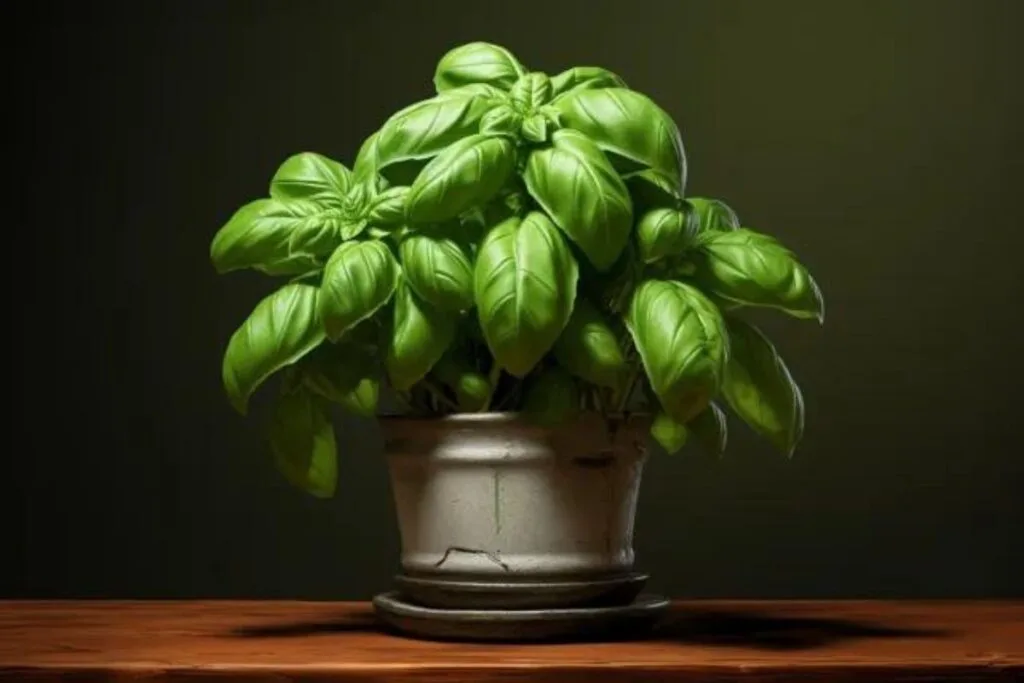
Growing basil in pots is an excellent option, especially if you have limited garden space or want to keep your herbs close at hand in the kitchen. Here are some tips for successful container gardening with basil:
- Choose the Right Container: Select a pot or container that is at least 6-8 inches deep and has good drainage holes. Ensure it is large enough to accommodate the mature size of your basil plant.
- Use Quality Potting Mix: Fill the container with a well-draining potting mix that contains organic matter. Avoid garden soil, as it may not provide adequate aeration.
- Placement: Place the pot in a sunny location where your basil will receive 6 to 8 hours of direct sunlight per day. If growing indoors, choose a sunny windowsill or use grow lights.
- Watering: Water your potted basil regularly, keeping the soil consistently moist but not soggy. Container plants may dry out more quickly, so monitor the soil moisture closely.
- Fertilize: Apply a balanced, water-soluble fertilizer every 3-4 weeks during the growing season to provide essential nutrients.
Overwintering
Overwintering basil is a valuable practice if you want to enjoy fresh basil year-round. Basil is sensitive to cold temperatures and can’t survive frost, so taking steps to protect your plants during the winter months is essential.
To overwinter basil, consider transplanting it into pots and bringing it indoors before the first frost. Place the pots in a sunny window or use grow lights to provide sufficient light.
Keep the soil consistently moist but not waterlogged, and periodically pinch back the plant to encourage bushy growth. With proper care, you can enjoy the flavors of homegrown basil even in the colder months.
Transplanting
Transplanting basil is a useful skill, whether you’re moving it to a larger pot or transferring it to your garden.
To transplant basil successfully, select a new location with well-draining soil and ample sunlight. Gently remove the basil plant from its current container or garden spot, taking care not to damage the roots.
Dig a hole in the new location, place the basil plant at the same depth as it was before, and fill the hole with soil. Water thoroughly to help the plant settle in its new home.
Transplanting basil allows you to refresh the soil, prevent overcrowding, and optimize growing conditions for your herb.
Common Pests & Diseases
While basil is relatively resilient, it can still fall victim to common pests and diseases. Keep an eye out for aphids, whiteflies, and spider mites, which can infest the leaves and sap the plant’s vitality.
Neem oil or insecticidal soap can help combat these pests. Additionally, basil can be susceptible to fungal diseases like powdery mildew and downy mildew.
To prevent these issues, ensure good air circulation, avoid overhead watering, and promptly remove any affected leaves. Maintaining proper care practices, such as well-drained soil and appropriate watering, will also help your basil plants stay healthy.
By staying vigilant and taking preventive measures, you can enjoy a thriving basil garden. Happy gardening and cooking!
